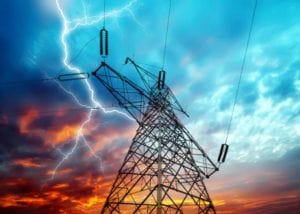It’s a classic business adage that you can’t manage what you haven’t measured, and that principle certainly holds true for power quality – but exactly what aspects of power quality should facility personnel be tracking, and how should they go about the process? While every location has its own unique profile of installed loads and grid-supplied power issues, Schneider Electric has some general recommendations.
The results from a number of power-quality studies in the United States and Europe have identified a number of common and expensive (see this post for details) power quality disturbances, drawing from a range of end users. Voltage sags and swells and harmonics are, by far, the most common issues facing U.S. companies (Figure 1), and Europeans see high economic impact from transients and surges, voltage dips and short interruptions (Figure 2), according to the Leonardo Power Quality Initiative.
Figure 1-Most common power quality issues (U.S.) Figure 2-Power quality disturbances with highest economic impact in EU-25 countries.Based on these results and the experience of Schneider Electric power professionals in conducting hundreds of power-quality audits and analyses every year, all around the globe, we recommend systematic monitoring of the following power-quality problems:
- Harmonics
- Power factor
- Voltage dips and interruptions
- Transients
- Imbalance (specifically in motor applications).
How should these issues be monitored? Targeted, short-term measurement of known problem locations over, say, a two-week period is one option. However, such a tactical effort will miss any events happening outside the study period, and it won’t support ongoing continuous-improvement goals. Instead, we recommend a installing a permanent power-quality monitoring system to detect and record all disturbances on an ongoing basis. With continuous monitoring comes the possibility of making continuous improvements to your system’s power quality and sustainability.
Where should measurement happen?
Continuous improvement is a strategy, not a tactic. Meters that can provide ongoing monitoring of both short-term and ongoing power-quality issues cost more than those that simply monitor usage and time of use, so they should be installed where they add the most value. One good option: at a facility’s main service-entry point, where the equipment can help managers determine if disturbances are coming from the energy supply or are being generated onsite.
Products like Schneider Electric’s PowerLogic PM8000 , along with StruxureWare power-management software, can collect the data needed to support continuous power-quality improvement programs. But how can that data be presented to make it easy for facility personnel to understand? I’ll be covering that topic in my next post, which will look at ways today’s power-quality monitoring systems are making data easier to understand and analyze.
Want to learn more about Schneider Electric’s approach to continuous power-quality improvement? Check out our latest white paper on the topic, “A Framework for Implementing Continuous, Iterative Power Quality Management.”



Conversation
USEFUL ARTICAL